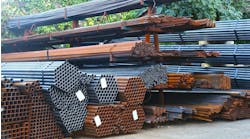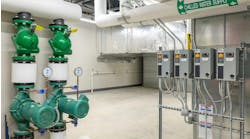Latest from Home
Sponsored
IF YOU HAVE played or followed sports, you most likely have learned the science of tracking statistics. Most sports fans find it fun to follow team and player statistics. I know I do.
Service companies create many statistics as they do business. Like sports, tracking business statistics can help a business improve by identifying problem areas so managers can make alternative business choices when they find themselves in similar situations. You know you should track and use statistics but you have a business to run. You need to know which statistics are most likely to improve your business.
Your most important business statistics are called Key Performance Indicators, or KPIs for short. As the name implies, these statistics are most likely to help you improve your business or be your early-warning system when situations could become costly. Do you know what the No. 1 KPI is for all service companies? Whether you are an auto mechanic, hairdresser, groundskeeper, plumber, electrician or HVAC technician, one KPI stands out as more important than all others.
As a Nexstar business coach, I have asked every member I meet, "What is the most important KPI?" Surprisingly, nearly everyone comes close to the right answer, but nobody has nailed it — except for one member. So it shouldn't surprise you that this member was found to be the top financial performance company in the Frank J. Blau Jr. Annual Financial Survey for 2004. I will identify that member later in this column.
A KPI that every service business should be watching closely is billable hour efficiency. But in our trades, there are two types of billable hour efficiency. Both have a purpose in our industry and should be used. If you are not clear on which one to use for which purposes, the overhead monster could devour you and you wouldn't have a clue what was happening.
Are you ready? The biggest misconception in tracking billable hour efficiency is confusing company efficiency with technician efficiency.
Let's start with an example of technician efficiency.
Picture this scenario: The phones stop ringing in your business for a few days — maybe a few weeks. That well-oiled service machine of yours slows to an idle and stays that way. Many of your technicians complain about not getting enough hours. I'm sure you can picture this if it hasn't happened to you already.
One of your technicians only worked 20 hours this week due to lackluster call volume. Now this technician happens to be your top-selling ace and during the week he sold 20 hours of flat-rate time. So how efficient is the technician?
If you said 100%, you are correct. Although he worked a short week, he sold every hour for which he was paid.
This is an example of Technician's Billable Hour Efficiency. This is a useful statistic to measure in our service businesses, as it is a strong indicator of a technician's ability to sell his technical ability. This is a KPI that will help a service or training manager evaluate and coach the technician on selling skills. It has little or no value beyond that measure.
Now here comes the often-misinterpreted measure of efficiency. Using the same scenario above, how efficient is the company? If you answered 50%, you are right. The company's Billable Hours Efficiency is 50%. So how can a technician be 100% efficient and the company dramatically less? I will explain.
When figuring your selling price, you should start with a total of 2,080 hours per year per technician you have available to sell; 2,080 hours divided by 52 weeks in a year calculates to 40 hours per week per person. If you sell 20 hours out of a possible 40 per week, you are 50% company efficient.
You may have sent your technician home early in an attempt to reduce your costs. The misconception is that the only cost you are reducing is your direct costs. Your indirect costs, or overhead, keep gobbling up any profit you may have had because your selling price is based on 40 hours per week. This is the most important KPI for you to keep your eye on. Company Billable Hours Efficiency is in fact, "Sold Hours."
If you are not doing so already, start tracking sold hours. For an owner, nothing else matters. Think about it — everything that happens in your business will affect sold hours — either positively or negatively. Money is a byproduct of sold hours.
And the only Nexstar contractor who correctly answered Company Billable Hours Efficiency is the most important KPI was Steve Lowry of Lowry Electric in southeastern Pennsylvania.
Jim "Bone" Hamilton is a business coach with best practices group Nexstar. He started and grew his own successful business to the point where a consolidator bought the company in 2001. Hamilton later became a Nexstar business coach. Additional information about Nextar is available by calling Lisa Schardt or Rich Piepenburg at 888/609-5490 or visiting www.nexstarnetwork.com

